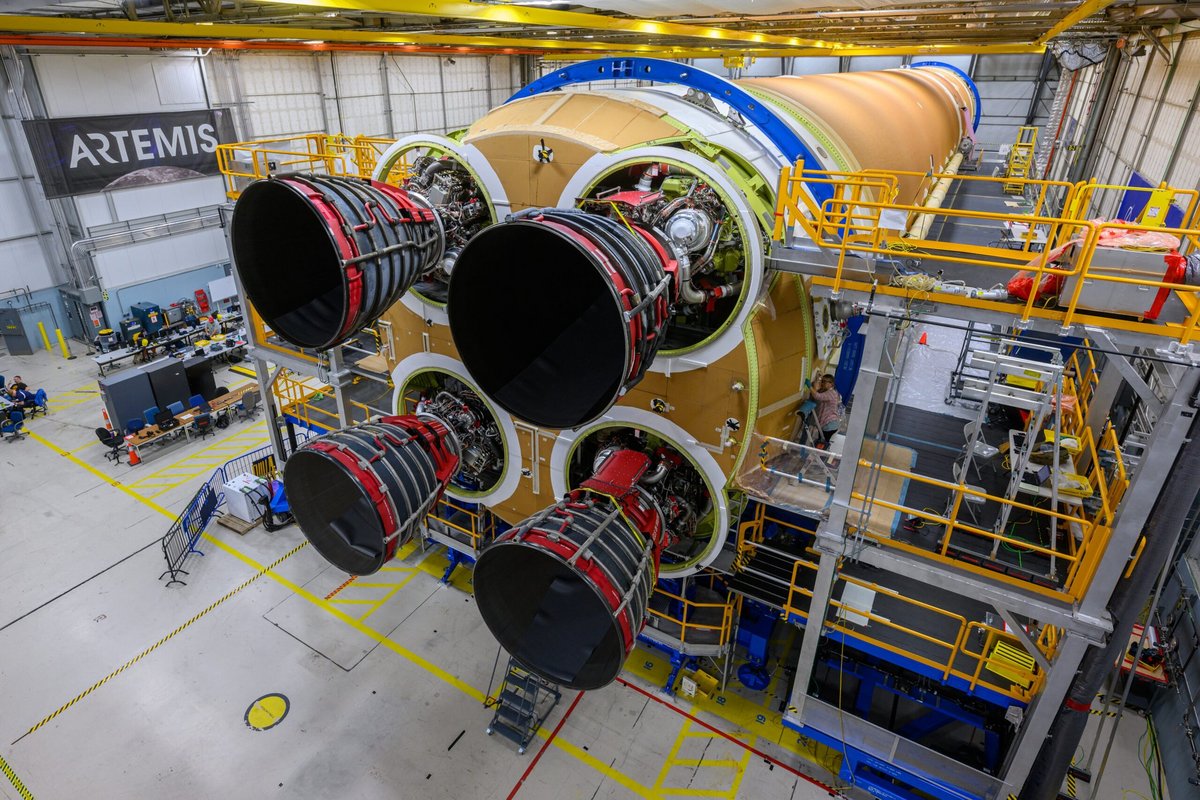It was a difficult, but expected, mission for NASA officials: to announce the updated schedules for their flagship manned return program around and to the Moon, Artemis. Technical challenges and safety requirements push back the next flight to September 2025, and the lunar surface mission to 2026.
The timing was not necessarily the best, with the ongoing failure of the Peregrine robotic mission, which aimed to land on the lunar surface with the help of NASA. A first for the Americans since 1972 and the departure of Eugène Cernan and Harrison Schmitt (Apollo 17).
But NASA officials, led by Bill Nelson, didn’t really have a choice. Indeed, since the announcement of the crew of the Artemis II mission last April and several concrete advances on the launcher, the space agency had no longer really mentioned the launch date of the first astronauts to return around the Moon . In addition to budgetary challenges (NASA did not have the increase requested to combat inflation), Bill Nelson therefore announced a postponement of almost a year.
10 months later
Artemis II, first of all, is being pushed back to September 2025. There are several reasons for this, the first being security. Since the return of the Orion capsule after Artemis I in December 2022, the teams have been working on feedback and improvements to be produced to accommodate the crew of 4 astronauts. And everything is not rosy. The heat shield, for example, suffered greater damage than expected, even though it would have preserved lives inside the capsule.
The technical conclusions on this subject are expected in the spring, after which it will undoubtedly be necessary to change some processes before mounting the shield on Orion, and assembling the capsule with its European service module. Also inside, some systems are not 100% satisfactory for the moment, in terms of the electric batteries, but also on an ambient air ventilation circuit. Nothing particularly surprising for a new capsule, even if one could hope that NASA and its industrial partner, Lockheed Martin, would have been able to take care of these concerns sooner.
2025, 2026 and 2028 for the next manned flights!
It will therefore be necessary to count on an assembly of the Space Launch System which should really start in spring-summer 2024 with the arrival of the central stage in Florida. The crew, with the first Canadian to fly on a lunar mission (Jeremy Hansen) and the first woman (Christina Koch) continues to prepare for the event. A departure in September 2025 logically postpones the first manned landing on the Moon of the Artemis program to September 2026. And it is the challenges, both budgetary and technical, which are delaying for the moment the first long mission on the future manned Gateway station (currently under construction). ) to 2028.
Manufacturers save a little time
Concerning Artemis III, NASA is dependent on two private service providers, SpaceX for the lunar lander (Starship) and Axiom Space for the spacesuits dedicated to the outings. For both manufacturers, this delay will be a real breath of fresh air… And yet, it might not be enough. The delay in development of Starship is in the viewfinder in particular, despite significant progress during the last test, which still ended in an explosion. 2024 and 2025 will therefore be an opportunity for SpaceX to double down on technology, the steps to send Starship around the Moon (and land there with a crew) still being very numerous.
In particular, SpaceX will have to repeat its method of storing and transferring propellants in Earth orbit, because for a Starship mission serving Artemis, it will need “around ten” refuelings before reaching the Moon. A titanic challenge in two and a half years… The SpaceX representative at the NASA conference nevertheless announced that thanks to conclusive tests, the next test copy will be assembled and will undergo its final tests by the end of the month, for an expected flight in February.

An ambitious program nonetheless
Artemis, despite this delay, remains a flagship program for NASA which will continue to decline its contracts around its manned lunar missions. In addition to the Gateway orbital station and robotic exploration missions within the framework of CLPS contracts (such as that of the Peregrine lander), NASA will engage manufacturers on major subjects this year, in particular that of the future lunar vehicle , as well as the delivery of large cargo capacities to the surface in order to establish a long-term base there.
Obviously, this will all take place over a decade (or maybe more). There was thus talk of competition with China, whose authorities declared in 2023 that they had the firm intention of sending their astronauts to lunar soil in 2029. A possibility that China would “deprive priority” to the Artemis program? The NASA administrator doesn’t really believe it.
Source : NASA

4